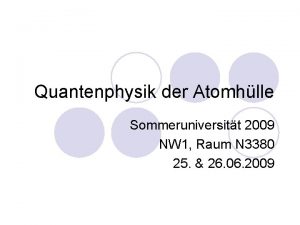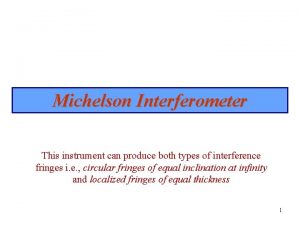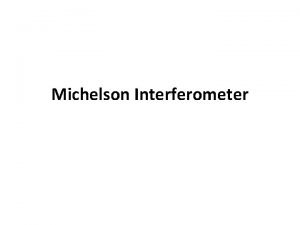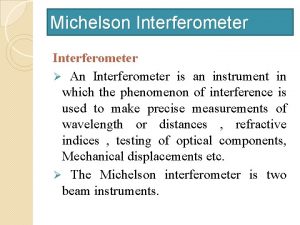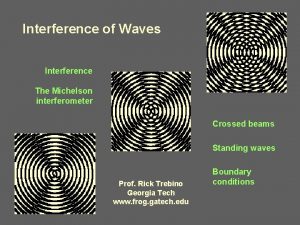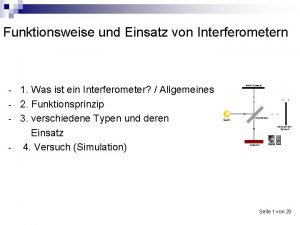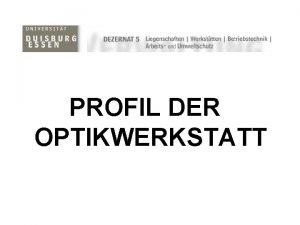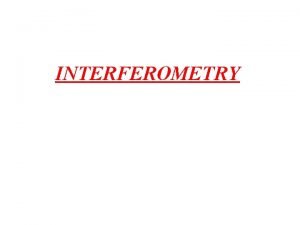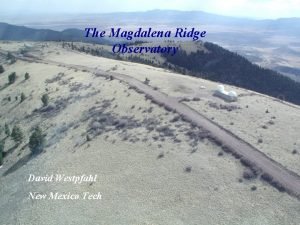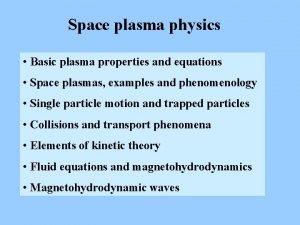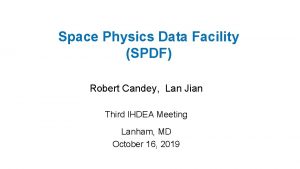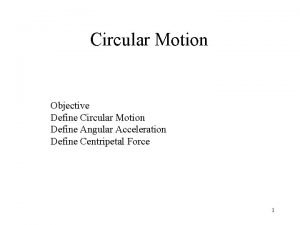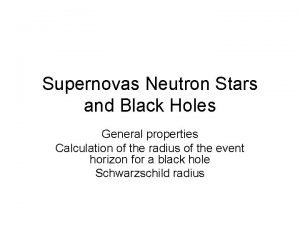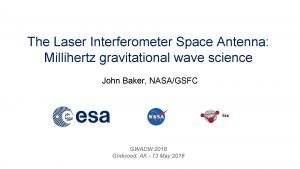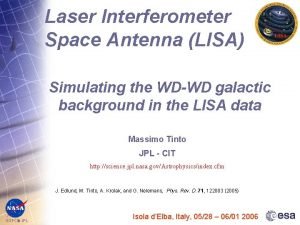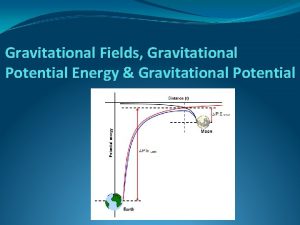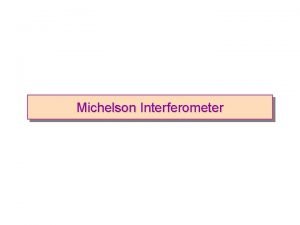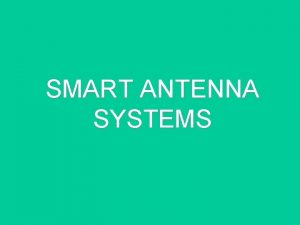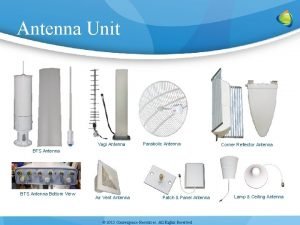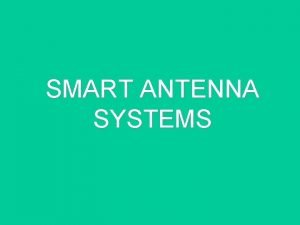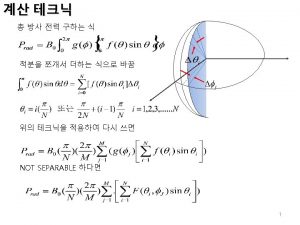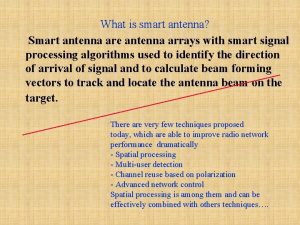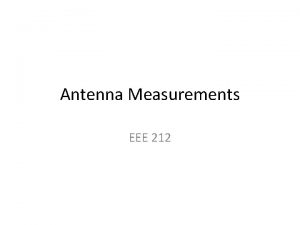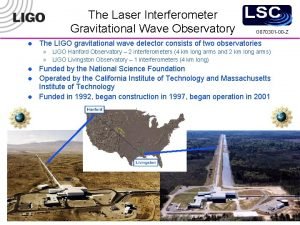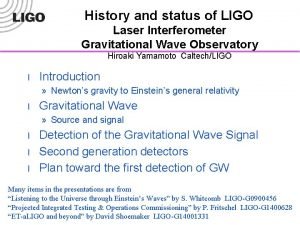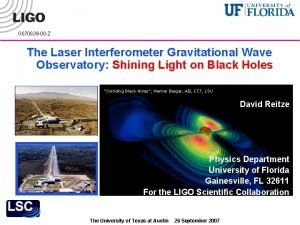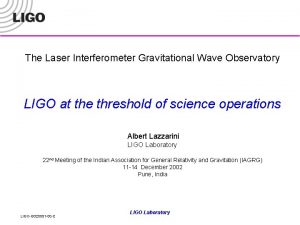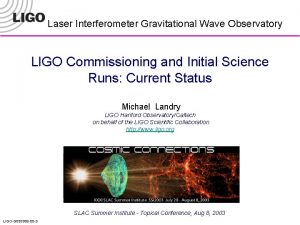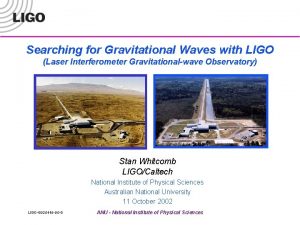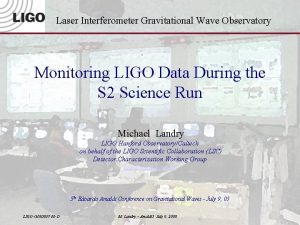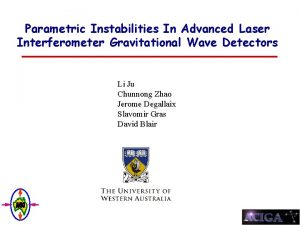LISA Laser Interferometer Space Antenna Gravitational Physics Program





















- Slides: 21

LISA Laser Interferometer Space Antenna Gravitational Physics Program Technical implications Jo van den Brand NIKHEF – Staff Meeting, January 2006 http: //www. esa. int/science/lisa LISA October 3, 2005

VIRGO & Lisa – Technical activities § Linear alignment of Virgo – § Monolithic suspension of Virgo mirrors – § Improve mirror suspension Lisa electronics – LISA Reduce thermal noise Recycling mirror for Virgo+ – § Keep mirrors and input beam aligned Drag-free control readout

Linear alignment of VIRGO interferometer § Phase modulation of input beam W § Demodulation of photodiode N signals at different output beams – => longitudinal error signals § Quadrant diodes in output beams – => Alignment information – (differential wavefront sensing) § Anderson-Giordano technique – EOM LISA 2 quadrant diodes after arm cavities

Detection Can have 1 normal diode and 2 quadrant diodes at each output port LISA

Linear alignment setup LISA

Present Virgo noise budget Control noise LISA

Present situation § Frascati group is leaving Virgo – Since 01/2006 § Frascati’s responsibilities – Original design of alignment system – Strategy, optics, prototype experiments, … – Design & realization of electronics § Problem LISA – Continue support for alignment electronics – Make new modules / spare modules – Continue development for new requirements

Developments § Present developments – More modules needed – Installation of 9 th quadrant diode (maybe 10 th) – Spares needed – New Annecy local oscillator boards, compatible with alignment – Phase shifters for standard photodiodes § Possible developments – Substitute Si diodes with In. Ga. As diodes – Better quantum efficiency – Lower bias voltage – => higher power capability Þ lower noise Þ Reduction of electronics noise Þ Better preamplifier: 5 p. A/rt. Hz -> 1. 6 p. A/rt. Hz (? ) Þ DC signals: pre-amplification / pre-shaping – Fast quadrant centering system – (Napoli is working on that) – LA noise limits sensibility (especially at low frequencies) LISA

QD electronics Manpower estimate ~ 3 FTE from electronics group LISA phase shifter demodulator Quadrant diode box

Virgo – local control of mirrors Local control of mirrors Present accuracy about 1 micron Feedback systems induce noise Possible application for RASNIC LISA

VIRGO Optical Scheme Input Mode Cleaner (144 m) 3 km long Fabry-Perot Cavities Laser 20 W Power Recycling Output Mode Cleaner (4 cm) LISA

Virgo – inside the central building LISA

Mirror suspension High quality fused silica mirrors LISA • 35 cm diameter, 10 cm thickness, 21 kg mass • Substrate losses ~1 ppm • Coating losses <5 ppm • Surface deformation ~l/100

Superattenuators Possible contributions: § Virgo+ will use monolythic suspension § Input-mode cleaner suspension

Monolithic suspension § Fused silica fibers § Bonded to mirror § Reduce thermal noise § Needed for Virgo+ § Realized by GEO 600 Weld Silicate (Hydroxy. Catalysis) Bonding LISA

Input mode cleaner § Mode cleaner cavity: filters laser noise, select TEM 00 mode Input beam LISA Transm. beam Refl. beam

LISA - drag free control § § § § LISA SRON Test equipment for position sensor read-out electronics in on-ground tests of the satellite system Simulation software modules of the position sensors, used in system simulations TNO-TPD Test equipment of the Laser Optical Bench Decaging Mechanism (TBC) Bradford Engineering Cold Gas propulsion (TBC)

LISA key technology LISA § Test-mass position sensing: Capacitive sensing. § Drag-Free control. § FEEP micro-Newton thrusters. NIKHEF and SRON develop ASICS for electronic readout of all LISA signals Low noise, high resolution ADCs NIKHEF 2 – 3 ASIC designers + 2 FTE support

Summary § Linear alignment of Virgo – § Monolithic suspension of Virgo mirrors – § 2 FTE EA Lisa electronics – – LISA 2 FTE EA Recycling mirror for Virgo+ – § 3 FTE electronics 2 – 3 ASICS designers 2 FTE support

Optimized alignment noise budget Maximized power Optimized mirror centering (0. 2 mm) LISA

Scheme of LA electronics Low-pass filter AC: Gain 200 diff. sig. Shot noise Preamp. noise QD box non-diff. sig. DC: Gain 1 Non-optimal treatment of DC signals dominated by ADC noise (but were not foreseen as error signals) LISA VME ADC noise
 Laser interferometer space antenna
Laser interferometer space antenna Mach-zehnder-interferometer leifi
Mach-zehnder-interferometer leifi Types of fringes in michelson interferometer
Types of fringes in michelson interferometer Prinsip kerja interferometer adalah
Prinsip kerja interferometer adalah What is the principle of michelson interferometer
What is the principle of michelson interferometer Constructive vs destructive interference
Constructive vs destructive interference Interferometer funktionsweise
Interferometer funktionsweise Optikwerkstatt
Optikwerkstatt Npl flatness interferometer
Npl flatness interferometer Magdalena ridge observatory interferometer
Magdalena ridge observatory interferometer Why does it happen
Why does it happen University physics with modern physics fifteenth edition
University physics with modern physics fifteenth edition Physics hl ia ideas
Physics hl ia ideas Plasma equation
Plasma equation Space physics data facility
Space physics data facility Rotating space station physics problem
Rotating space station physics problem Joint space vs cartesian space
Joint space vs cartesian space Space junk the space age began
Space junk the space age began Camera space to world space
Camera space to world space Cartesian space vs joint space
Cartesian space vs joint space World space computer
World space computer How to calculate schwarzschild radius
How to calculate schwarzschild radius

